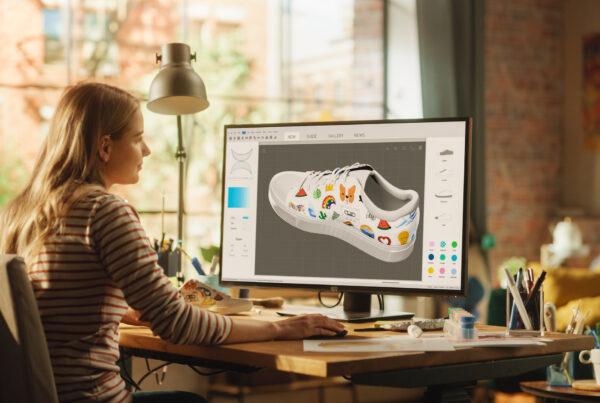 In the digital age, storytelling has evolved from traditional oral and written forms to dynamic, visually-driven narratives. After your web design training, mastering the art of visual storytelling can set you apart in a competitive market, allowing you to create engaging and memorable experiences for users.
In the digital age, storytelling has evolved from traditional oral and written forms to dynamic, visually-driven narratives. After your web design training, mastering the art of visual storytelling can set you apart in a competitive market, allowing you to create engaging and memorable experiences for users.
Here’s how to leverage visual storytelling techniques during your web designer career.
Understanding Visual Storytelling
As you have learned in web design training, visual storytelling involves visual media to convey a narrative. This includes images, videos, infographics, animations, and interactive elements.
The goal is to communicate a story or message in a way that is engaging and easy to understand. For web designers, this means creating websites that look good and tell a story that resonates with visitors.
The Importance of Visual Storytelling in Web Design
- Engagement: Stories capture and hold attention better than plain text.
- Emotional Connection: Compelling visuals evoke emotions and encourage engagement.
- Clarity: Visuals simplify complex information.
- Memorability: Stories are easier to remember, increasing repeat visits and referrals.

As learned in web design training, visual storytelling uses visual media to convey a narrative
Steps to Effective Visual Storytelling in Web Design
- Know Your Audience: Before you start designing, it’s crucial to understand your audience and what resonates with them. Leveraging insights from your web design course, conduct thorough research to identify their preferences, behaviors, and pain points.
- Define Your Narrative: Structure your story with a clear beginning, middle, and end. Having a clear narrative structure ensures that your story is cohesive and logical.
- Choose the Right Visual Elements: Select visuals that enhance and complement your story. This could include high-quality images, videos, infographics, and animations. Ensure that these elements are consistent with your brand’s style and tone.
- Images: Use images that evoke the desired emotions and support your narrative. Authentic, high-resolution images are more effective than generic stock photos.
- Videos: Videos can convey complex information quickly and effectively. Use them to show behind-the-scenes content, customer testimonials, or product demonstrations.
- Infographics: Infographics are great for presenting data in an easily digestible format. They can be used to break down statistics, processes, or timelines.
- Animations: Subtle animations can add a dynamic element to your story, guiding users through the content and keeping them engaged.
- Implement Interactive Elements: Interactive elements can significantly enhance user engagement. Consider incorporating clickable infographics, interactive timelines, or quizzes to encourage users to participate in the story.
- Maintain Visual Hierarchy: A clear visual hierarchy helps guide users through your narrative. Use size, color, and positioning to highlight key elements and ensure that the most important parts of your story stand out. This makes it easier for users to follow the storyline and absorb the information.
- Optimize for Performance: Ensure your website is optimized for performance, with fast loading times and responsive design. Compress images and videos without compromising quality and use lazy loading techniques to improve load times.
- Test and Iterate: Continuously refine your visual storytelling approach throughout your web design career. Use analytics to track user engagement and gather feedback. Identify what works and what doesn’t, and make adjustments accordingly.

Continuously test your visual storytelling approach throughout your web design career
Launch Your Web Design Training Career With AOLCC!
AOLCC’s Web Designer Diploma Program equips students with the essential skills and knowledge to build a strong foundation in web design. Through this comprehensive program, you will learn to plan and design engaging, interactive websites using industry-standard software like Adobe Photoshop, Illustrator, Dreamweaver, and Animate.
Our curriculum covers HTML and CSS for web publishing and delves into critical topics such as accessibility standards, color, typography, and composition. Graduates leave with a professional design process, enabling them to take a website from concept to launch and produce a well-rounded, impressive portfolio.
Are you ready to leap with AOLCC?
Your career awaits!




